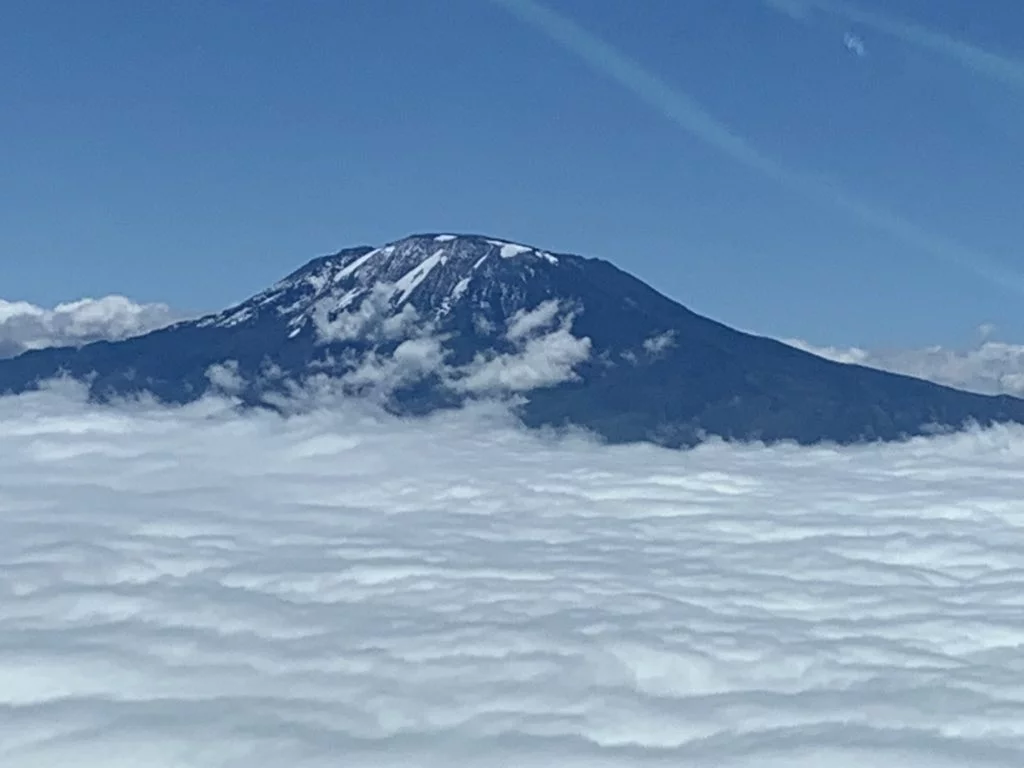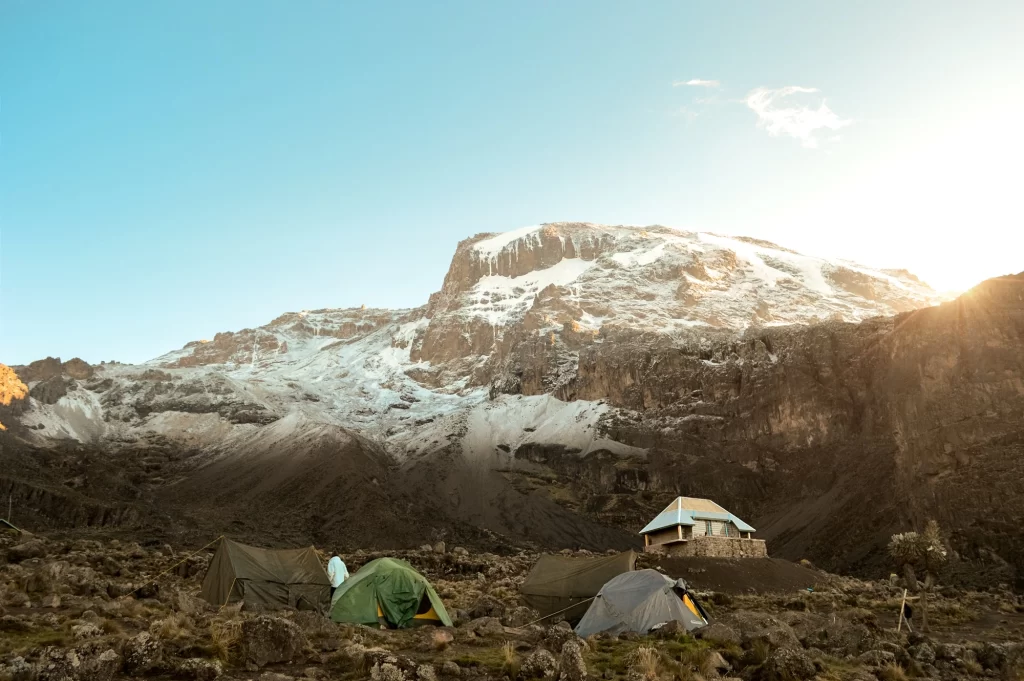Mount Kilimanjaro is one of the biggest mountains that are found in Africa. It is the tallest mountain found in the continent of Africa. It is also the largest standing mountain in the world and therefore making it ranked among the seven summits of the world. Several theories explain the origin of this mountain but studies and research conducted by several scholars and scientists show that Mount Kilimanjaro was brought into existence by volcanic activity. This is strongly proven by the fact that Mount Kilimanjaro has three volcanic cones. These are Mawenzi, Shira and Kibo.Some of the cones are extinct while others are dormant, meaning the dormant one is likely to erupt again.
Mount Kilimanjaro is located in Tanzania and it is a snow-capped mountain. It has a height of 5,895 meters which is equivalent to 19,340 feet. It is also one of the oldest standing mountains in Africa since its existence can be dated from a long time ago, especially in the 80s. For a very long time, it has been a major tourist attraction where visitors from different parts of the world come to visit and explore the nature of the mountain and hike through it.
Several climate zones and ecological systems are experienced around this place. Some of these include rainforests, health, and moorland among many clothes. A visit to Mount Kilimanjaro can therefore be one of the most interesting experiences that one would venture into because there are several tourist attraction sites and recreational facilities that would enlighten one’s experience after visiting the mountain.

How Long Does It Take To Climb The Kilimanjaro?
A journey through Mount Kilimanjaro can be one of the best experiences that one can ever have during a vacation or recreational stay. This is because there are many natural sceneries in the mountain that are ideal for one’s recreation. A journey through Mount Kilimanjaro takes several days, depending on the type of route that one uses and the kind of change of attitude that is experienced in the mountain. Moving across the mountain is like moving from one latitude to another and therefore there is a change in climate after moving across the latitudes.
Climbing Mount Kilimanjaro takes a duration of about 5 to 10 days. Several reasons contribute to the long duration of stay in the mountain. Many believe that the more the duration of the journey the more your body can adjust to the prevailing conditions and avoid any kinds of altitude sicknesses that are likely to attack a person. As one climbs the mountain the atmospheric pressure lowers and therefore the rate of breathing increases hence the need for the production of more red blood cells to produce enough oxygen to climb the mountain.
Mount Kilimanjaro Hike
When climbing Mount Kilimanjaro, several routes are involved. There are a total of seven routes that can be used when climbing Mount Kilimanjaro. The most recommended routes when hiking through Mount Kilimanjaro are the two, which are namely Marangu and Machame routes. The reason why they are mostly recommended is that they have more complex camping structures, are one of the most adventurous, and also because they are the safest for a simple climb through the mountain.
Other routes that can be used when climbing Mount Kilimanjaro include Umbwe, Lemosho, Shira, Northern Circuit, and Rongai routes. Some of these routes sometimes require the service of experts due to their complexity and therefore they are not referred for one to use to avoid any unnecessary occurrences that may emerge from using them. For this reason, visitors avoid these routes and use the simple ones for a better and easier experience during their hike from bottom to top and back through the mountain.
Do You Need Oxygen For Kilimanjaro?
A climb through Mount Kilimanjaro experiences a significant change in altitude as one keeps on climbing the mountain. As you go up the mountain, the altitude rises while the atmospheric pressure lowers. There develops a deficit in the human body known as oxygen debt that causes panting. Oxygen debt is whereby the oxygen supply is less than the amount needed in the body. The human body, therefore, responds to this deficit by manufacturing more red blood cells that will assist in producing more oxygen required by the body to correct this deficit.

You do not need oxygen when climbing Mount Kilimanjaro. This is because the altitude in Mount Kilimanjaro is barely the maximum altitude that does not require supplemental oxygen. Mount Kilimanjaro has a height of about 19,340 feet. The only altitudes that require the need for supplemental oxygen are altitudes normally above 23,000 feet, and altitudes above 26,000 feet are not safe for human life, that is, it is very difficult for one to survive in such high altitudes. These high heights are most of the time referred to as death zones, hence they are not so safe. The use of supplemental oxygen in Mount Kilimanjaro lowers the body’s ability to increase the amount of oxygen taken in.
Is Mount Kilimanjaro Visible From Kenya?
There once existed many speculations that Mount Kilimanjaro was once located in Kenya. After research conducted by several people, it was finally concluded that Mount Kilimanjaro is located in Tanzania, and is the tallest mountain in Africa. However one can also approach Mount Kilimanjaro through Kenya if they wish to, though the most preferred place to go to Mount Kilimanjaro is through Tanzania.
Mount Kilimanjaro is visible from Kenya. The most ideal place to have a great view of Mount Kilimanjaro is the Amboseli National Park in Kenya and for you to have a hike through the mountain it is a must use the Tanzanian route.
Is Mount Kilimanjaro In The Death Zone?
Death zone simply refers to special kinds of altitudes that are beyond the optimum and that have a very little supply of oxygen. Heights above 26,000 feet are the most known heights as death zones, because the chances of surviving in these high altitudes are very minimal, especially without a supplemental oxygen source to rely on.
Mount Kilimanjaro is not in the death zone because its height is slightly below the optimum height. All regions in the death zones require a must-carry of adequate oxygen supply for one to survive. Otherwise, without an extra source of oxygen in the death zone, it’s a threat to human life.
